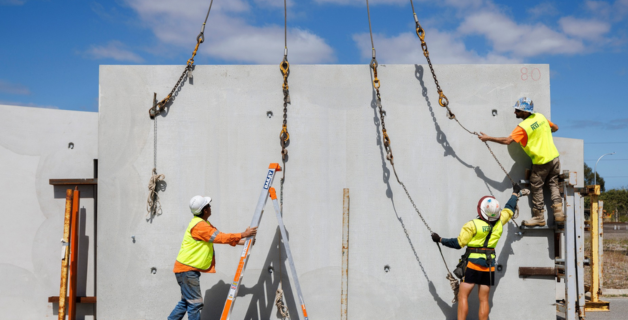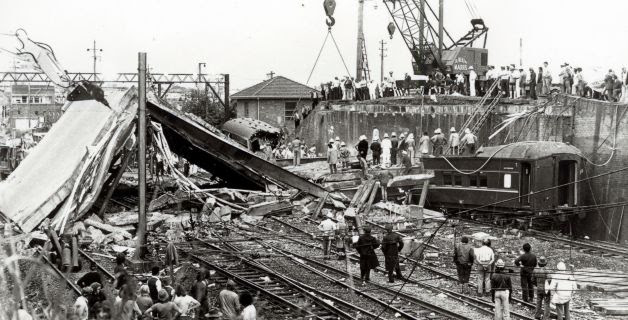WOBO is pleased to share the news items from Create Digital

An engineer’s solution to the housing crisis
It takes this Australian company just four days to build a standard four-bedroom, two-bathroom house.
 Where should engineering take bigger risks?
Where should engineering take bigger risks?
Advancements such as solid-state batteries, hydrogen fuel and geoengineering could fast-track the journey to carbon neutrality, according to one expert.
Three experts answer the following hypothetical: Where do you wish engineering would take bigger risks?
Liza Maimone FIEAust CPEng EngExec
I believe the idea of risk management itself needs to evolve. Engineering needs to embrace a more dynamic, forward-thinking approach to risk – moving away from static, one-off assessments and toward continuous, iterative cycles of learning.
Emerging technologies such as AI and machine learning offer powerful tools to support this shift, allowing engineers to process vast data sets, predict risks more accurately and adapt in real time.

Shoring up coastal infrastructure
“The main issue that coastal engineers face is that we’re resolving problems left from previous infrastructure.”
In coastal engineering, no one works from a blank slate. When a foreshore is redeveloped, the engineers charged with the transformation will see their work shaped by the existing infrastructure.
This is true even in a country like Australia, where coastal construction has been carried out over decades rather than centuries.
Even the influence imposed by previous construction might falter before the might of the natural forces that shift and push an area’s coastal geography.
“The main issue that coastal engineers face globally is that we’re generally resolving problems left from previous infrastructure, and that’s mostly because sand is moving along the coastline continuously,” University of Queensland School of Civil Engineering Professor Tom Baldock told create digital
“Transport of littoral sand along the coast is the same worldwide, and if you interfere with that, that’s when you cause major problems with your down-drift coastal infrastructure in terms of chronic erosion problems that keep going forever.”

5 disasters that changed Australian engineering forever
These catastrophes didn’t just change lives – they changed how engineers adapt for wind, water, fire and failure.
These catastrophes didn’t just change lives. They changed how engineers design for wind, water, fire and failure.
Engineering rarely makes headlines for the lives it saves. But in the wake of disaster, its impact is often written into every reform, standard and safer structure that follows.
Across Australia, major catastrophes have acted as pressure points for change, forcing the profession to confront its blind spots and raise the bar.
The above video explores five moments when failure led to progress. Rather than retelling tragedy, we’ve traced how engineers responded – not only with better designs and stronger codes, but with a deeper commitment to protecting communities. The result is a legacy of learning that continues to shape the way engineers builds today.
If you enjoyed this video feature, you might also like our deep dives into how engineering is portrayed on screen. From dissecting iconic film scenes to exploring the most realistic engineering moments in cinema, these stories reveal the science behind the spectacle.
The impacts of disaster can be wide-ranging. At this on-demand webinar, explore the hazards of hydrogen explosions and the knock-on consequences on infrastructure.

Nature’s blueprint for unbreakable infrastructure
Engineers are turning to nature to build infrastructure that emerges stronger after disturbance.
Engineers are turning to nature’s time-tested processes to construct infrastructure that adapts to stress and emerges stronger after disturbance.
Some of the most recent innovative advances in engineering have taken their cues from the natural world – from high-rise towers that flex like coastal trees to bullet trains shaped like kingfisher beaks.
But it’s also through disruption that nature’s ingenuity is forged, revealing design lessons in resilience and adaptability.
Nature’s solutions, honed over millions of years, offer blueprints for systems that are not only robust, but also adaptive, resilient and regenerative.
By studying how ecosystems adapt to stress, recover from disturbance and even emerge stronger, engineers such as Professor Cheryl Desha FIEAust CPEng, Science and Innovation Director at Natural Hazards Research Australia, are uncovering design principles that promise to revolutionise infrastructure, urban planning and hazard mitigation.

What caused the I-35W Minneapolis River bridge to collapse?
Why did a bridge that had satisfactorily performed for 40 years collapse so suddenly?
What caused a bridge that had satisfactorily performed for 40 years to collapse so suddenly?
At 6:05 pm on 1 August 2007, the 40-year-old I-35W Highway Bridge in Minneapolis, Minnesota, suddenly collapsed. A 140 m-long section of the main truss, carrying 111 vehicles at the time, fell 33 m into the river below. Thirteen people were killed, and a further 145 were injured.
Two factors played a role: one was an error in the bridge’s design; the other was the significant loading on the structure at the time of the failure.
Design
The I-35W bridge was designed by consulting firm Sverdrup & Parcel and Associates, and it was opened to traffic in 1967. It was 580 m long, carried eight lanes of traffic (four in each direction), and was made up of 11 approach spans and three truss spans. The bridge was of steel construction, with a concrete deck. By 2004 it carried an average of 141,000 vehicles daily.

Standards can both help and hinder innovation
They’re a critical tool for engineers and, for nascent technologies, their absence can be problematic.
Standards are a critical risk-management tool for engineers. But ensuring they don’t unnecessarily slow adoption of emerging technologies – such as green hydrogen – is a balancing act.
Standardisation is a great enabler of innovative, iterative design. It provides engineers with a platform on which to build and advance technologies or practices. But when blue-sky innovation hits, such as in fledgling industries like green hydrogen, new standards are needed.
Understanding the fundamentals of how design standards are created and maintained is critical for engineers looking to mitigate risk. Baz Kaknics, a civil engineer who manages codes and approvals at Hilti Australia and Asia Pacific, said there are three pillars for standards in engineering: health and safety, consistency, and durability.

“When we call on standards, we want to ensure two things: conformity and compliance. And they are very closely related,” he told createdigital Every structure consists of thousands, if not millions, of products when they are assembled together; conformity means those products are fit for purpose and being used in a compliant way
Safety is closely related to risk, meaning it not only focuses on things such as collapse prevention, but is crucial to preventing significant economic loss,” Kaknics said.

ELECTRIFICATION –Targets are great – but where’s the plan?
To reach net zero by 2050, our cities must act now to electrify, says Adrian Piani.
Australia’s path to net zero hinges on action. Drawing from Canberra’s pioneering efforts, former ACT Chief Engineer Adrian Piani explores the practical engineering, policy and infrastructure challenges of electrifying cities at scale – and the opportunities that come with getting started now. Delaying decisions risks future disruption. The time to plan, upgrade and lead is now.
Back in 2021, the ACT made a decision to electrify. It was a decision born not of ideology but of engineering pragmatism. The territory government released a position paper in August the following year that has since driven the planning and execution of an electrified city. And if Australia is serious about reaching net-zero emissions by 2050, more cities and towns must make similarly pragmatic decisions.
We made the decision in the ACT because the numbers told us it was the right thing to do. There’s no viable long-term future for fossil fuel gas in a net-zero system. While alternatives like hydrogen may have a place in some sectors, none are currently cost-effective or commercially viable for residential use. In contrast, electrification is proven, scalable and available right now. And once that decision is made, the real engineering work begins.
Electrification at a city scale is a complex but achievable endeavour. What our experience in Canberra shows is that the earlier a city makes the call, the more time it has to solve the myriad challenges involved – and the better placed it is to do so economically, strategically and sustainably.
